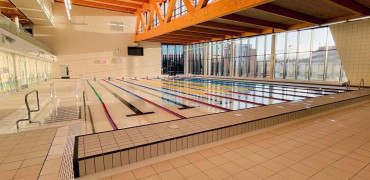In my last blog on data centres, I highlighted the crucial issue of energy use in these highly intensive buildings.
And it’s a topic that is vexing countries around the world as they struggle to match the ever-growing demand for data with available energy.
The problem is that data and energy have become central to most economies across the world, relied on equally by households and businesses.
For some countries and cities seems to be a choice of supplying one or the other, but can we find a middle ground for these modern utilities?
Three critical criteria need to be met: close temperature control, robust airflow and balanced moisture levels
The challenge
Some European nations have adopted strict prohibitions on developing large data warehouses.
For example, there is a nine-month development hold in the Netherlands on larger centres. Amsterdam wants to reduce data centre power usage by 10% to 15% and requires data centre operators to adopt a ‘sleep mode’ on servers not in use – with the threat of fines for those who don’t.
Similarly, Dublin has halted new data centre development until 2028 – a big step for a country that has seen significant growth from data-reliant corporates such as Amazon and Google.
But other data centre development strategies are flagging new approaches to balance the need for data centres with energy production and use. For example, data and renewable energy production are increasingly tied together in Spain.
Several data centre developments have been delivered with their own solar photovoltaic generation capacity.
The solution
Another solution which is gaining traction is the use of ‘waste’ heat from data centres as a source of space heating and hot water production for other nearby buildings and dwellings. At the end of 2021, pilot projects were underway in Scandinavia, the Netherlands and Germany. A good example is this Microsoft project in Helsinki.
With this method, heat removed from the data centre servers is applied to water circulated to other buildings, where heat pumps raise the water temperature for DHW and space heating. This method is also known as an ambient heat loop or Fifth Generation heat network.
It is interesting to note that, in the past, this approach may have been regarded as an ‘extra cost’ to a data centre project. However, given the significant increase in energy prices for businesses and householders, it has become a far more attractive way to ‘recycle’ energy.
How we can help
At Mitsubishi Electric, we believe that the appliance of existing technologies can help to reduce energy consumption in buildings like data centres. Our specialist IT cooling systems are used globally to provide energy-efficient cooling solutions for data centre managers who are targeted with lowering their energy use.
But there are other issues impacting the development (and redevelopment) of data centres, including their carbon footprint and broader impact on the buildings around them. This means we need to think about other approaches, such as re-using extracted heat energy and re-applying it through heat pumps, for example.
Mitsubishi Electric is also at the forefront of developing systems for low-temperature ambient heat loops (with the Ecodan Hydrodan). Applying multiple technologies can strike a balance between the data we need for the modern world and the energy efficiency we must achieve to reach net zero goals.
The science of cooling buildings like data centres dictates that there are limits to what the most advanced equipment can achieve. Ultimately, the heat must go somewhere. If we treat it as a form of energy, then the combination of efficient cooling and heat pumps for modern ambient networks can make all the difference.
The UK is not currently restricting the development of data centres. London is becoming a significant hub for data centre developments, and capacity expansion is well underway. But this will put increasing pressure on our energy supplies and national ‘net zero 2050’ goals. There is a middle ground in the struggle between data and energy, which means adopting the most energy-efficient cooling equipment and considering new approaches to designing HVAC systems for these important buildings.
To contact me to discuss your project, please email me warren.knight@meuk.mee.com or visit our dedicated webpage for further information.
Warren Knight is M&E Contractor Business Development Manager




